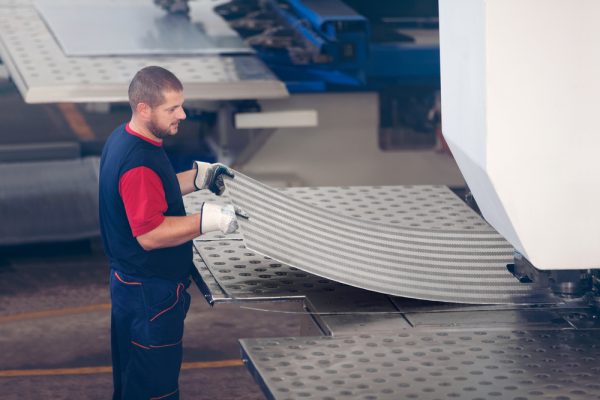2025 Trends in Aluminum Sheet Metal Fabrication to Watch Out for
We are almost halfway through 2025, and the industry of aluminum sheet metal fabrication in the United States is facing a remarkable transformation. Driven by technical advancement, current policy changes, and evolving market demands, these developments are reshaping the domain for consumers and manufacturers alike. In this blog, we will deeply look at the key trends influencing aluminum sheet metal fabrication this year.
Automation and smart manufacturing
Automation has become indispensable in modern metal fabrication. The integration of AI and IoT technologies is increasing precision, accelerating production timelines, and reducing errors. Robotic welding systems capable of real-time defect detection are reducing material waste and rework. Intelligent press brakes and CNC machines allow more complex and customized designs with greater effectiveness.

Advanced materials and customization
The requirement for high-strength and lightweight materials is on the rise, especially in industries such as automotive and aerospace. Manufacturers are increasingly utilizing advanced aluminum alloys, which provide superior durability and performance. The push for customization has also increased the adoption of flexible manufacturing systems or custom aluminum fabrication capable of providing tailored solutions for different applications.
Sustainability and Eco-friendly practices
Environmental considerations are now at the heart of fabrication processes. Companies are investing in energy-efficient facilities. These practices, including advanced nesting software, can also reduce material waste. The utility of recycled materials is also gaining traction, combining with broader sustainability goals and regulatory demands.
Impact of tariffs and trade policies
Current policy changes have remarkably impacted the aluminum industry. In March 2025, the U.S. government imposed a 25% tariff on aluminum and steel imports, desiring to bolster domestic manufacturing. This step is beneficial for some domestic manufacturers but also increases costs for producers dependent on imported materials.
Supply chain resilience
The integration of tariffs and global supply chain disruption has suppressed the requirement for more resilient supply chains. Fabricators are diversifying their supplier base and investing in local sourcing to reduce risks connected with international trade uncertainties.
Adoption of digital twins and predictive maintenance
Implementing digital twins – virtual replicas of physical assets – allows manufacturers to optimize and simulate procedures before original fabrication. Combined with AI-powered predictive maintenance, companies can anticipate failures in equipment and schedule timely intervention, eliminating maintenance costs and downtime.
Growth in on-demand fabrication
The evolution of on-demand production services is meeting the growing demand for small-batch, custom production. Advanced CAD/CAM software along with CNC machines allow quick turnaround times, allowing manufacturers to respond swiftly to particular customer demands.
Emphasis on workforce development
The industry is responding to the shortage of skilled labor by investing in workforce development programs and apprenticeships. At the same time, automation is helping bridge the gap, with user-friendly machines and software allowing less-experienced workers to complete tasks that previously required specialized skills.
Integration of AI in quality control
It is no wonder that Artificial intelligence is revolutionizing quality control. AI-driven systems monitor different functions in real time, detecting deviations or potential defects before they compromise the final outcome. This significant approach assures higher quality and eliminates scrap rates.

Advancements in laser cutting technology
Laser cutting techniques are becoming more precise, faster, and more versatile. Next-generation laser cutters feature higher-powered fiber lasers, perfect for cutting more complex and thicker materials with remarkable accuracy and speed. These advancements are important for industries that need intricate designs and tight tolerances.
FAQs
Q1: How are recent tariffs affecting aluminum sheet metal fabrication in the U.S.?
Manufacturers dependent on imported materials have seen costs rise due to the 25% duty on aluminum imports. However, it has also encouraged homegrown manufacturing, as evidenced by Steel Dynamics and other growing businesses to keep up with demand.
Q2: What role does automation play in modern fabrication processes?
Automation speeds up production schedules, improves accuracy, and lowers errors. Technologies like robotic welding and intelligent press brakes may allow for more intricate and personalized designs to be created more effectively.
Q3: Why is sustainability becoming increasingly important in metal fabrication?
Environmental factors play a major role in contemporary fabrication processes. To comply with legal obligations and more general sustainability goals, businesses are implementing energy-efficient equipment and procedures that minimize material waste.
Q4: How is AI improving quality control in the industry?
AI-driven systems monitor real-time operations and identify deviations or possible flaws before they jeopardize the finished product. This proactive strategy lowers scrap rates and guarantees higher quality.
As the aluminum sheet metal fabrication sector continues to evolve, staying abreast of these trends is essential for manufacturers aiming to remain competitive and responsive to market trends.
Final thoughts
Living in 2025, the industry of aluminum sheet metal fabrication in the United States, it is clear that adaptability and innovation are no longer optional – they are essential for growth and survival. Companies that leverage the latest technologies, respond to regulatory alterations, and commit to sustainable practices will set themselves apart within an extremely competitive market. Building resilient supply chains and investing in skilled talent will also remain core priorities. By maintaining proactiveness and forward-thinking, companies such as Cresco can not only navigate present challenges but also unlock new opportunities in the continuously evolving landscape. Join Cresco and fabricate a well-shaped future ahead!


